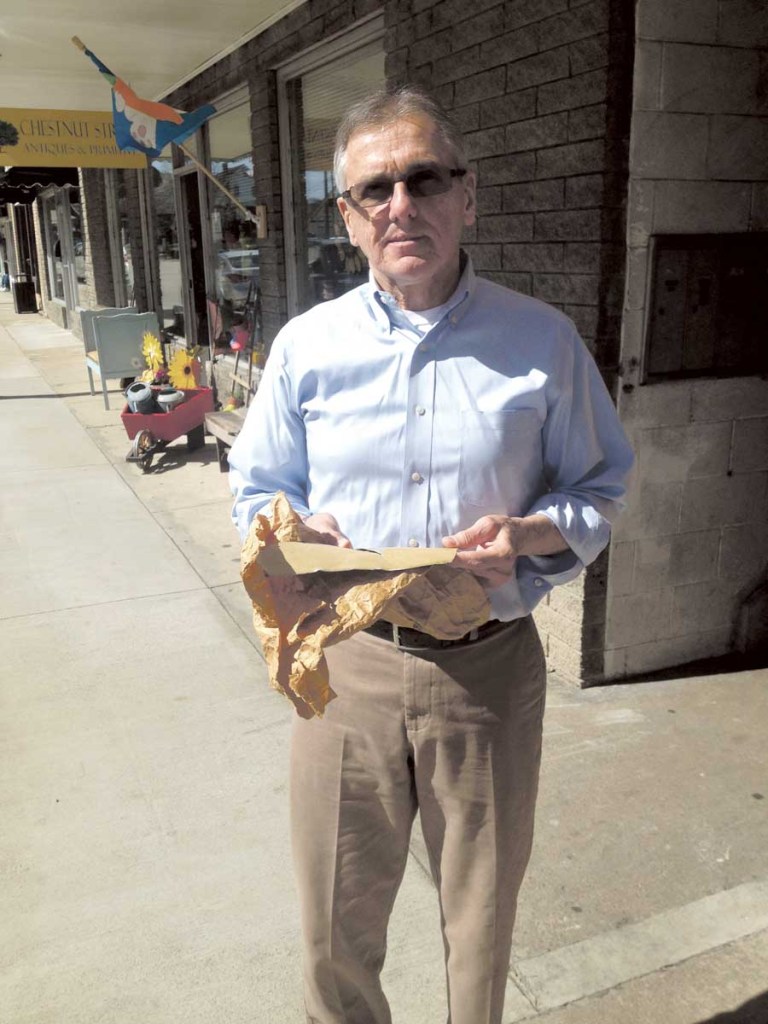W. Va. man has 45-year-old piece of plane from crash that killed Marshall University football team
Published 11:35 am Monday, April 11, 2016

- Ric Griffith holds part of the tail section from the plane in which 75 Marshall University football players, coaches, boosters and flight crew died on Nov. 14, 1970.
KENOVA, W. Va. — The piece of metal has stayed in the same paper bag for nearly 46 years.
The foot-long section is twisted, and you can see the rivet holes if you look closely.
Ric Griffith of Kenova, West Virginia has a poignant portion of history. It’s part of the tail section from the plane in which 75 Marshall University football players, coaches, boosters and flight crew died when it crashed in Kenova — about 10 miles away from the university in Huntington, West Virginia — on Nov. 14, 1970.
The crash and its aftermath later became the focus of the 2006 film “We Are Marshall,” capturing the determination and prevailing spirit of the Marshall University football program and those affected by the tragedy.
Griffith keeps the wreckage at the local drugstore he co-owns. He said the late Millard Robertson, a longtime Marshall fan, found it a couple weeks after the crash, kept it 25 years and gave it to him in 1995, shortly before his passing.
“(Robertson) told me when he presented this to me, he said ‘When I saw it, I realized first of all the violence ’cause it was twisted and torn, and secondly, I did not want to leave it in the ground there,’” Griffith said.
Griffith said a couple of weeks after the crash, Robertson walked to a hill overlooking the valley where the plane landed — he was thinking of the loss the victims’ families and the town endured. As he went down the hill, Robertson looked on the ground.
The tail section was found on the ground near a road where the tail clipped the trees and separated from the final crash site.
After he found it, Robertson kept the piece of metal in a drawer at his house — always in the paper bag.
“He said, ‘Whenever Marshall had a great moment or a sad moment, I would sometimes get that out and just look at it,’” Griffith said. “He said ‘I felt a link to those people.’”
A question: Could someone simply hike down the flight path or anyplace else near the crash site and scavenge for similar debris? It depends on who owns the land.
Eric Weiss, a spokesman with the National Transportation Safety Board office in Washington, said after his agency and/or the Federal Aviation Administration completes an investigation, a crash site is released to the property owner. From there, either the owner or the insurance carrier determines who may enter.
Griffith said he isn’t sure, but he thinks it would be trespassing for someone to hunt for another piece of wreckage.
“I think it would be trespassing going across the road,” he said. “With airport security being what it is, it’s probably under surveillance.”
Griffith, 67, said people his age want to see the section because they lived through the heartache. He said he hopes whoever views it reacts the same way Robertson did.
“(Robertson) said, ‘It’s shocking, it’s shocking, it’s disturbing,’” Griffith said, “’but at the same time if looked at with reverence, it’s powerful.’”
Schaefer writes for the Ashland, Kentucky Daily Independent.




